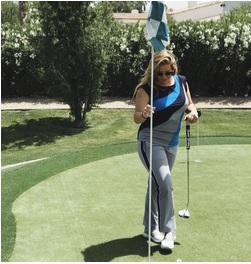Sportswear: Do They Really Work?
 As consumers, we need to be able to determine gimmicks from the real thing. It’s not uncommon for manufacturers to use hype and brand reputation to their advantage in order for them to sell products that are simply overpriced. And this applies to almost every industry, whether it’s in smartphones, shoes, cars, and clothing.
As consumers, we need to be able to determine gimmicks from the real thing. It’s not uncommon for manufacturers to use hype and brand reputation to their advantage in order for them to sell products that are simply overpriced. And this applies to almost every industry, whether it’s in smartphones, shoes, cars, and clothing.
Now, whenever a product retails for an exorbitant price, eyebrows tend to be raised. This mostly because majority of the current population are Millennials. And this particular generation is extremely resistant to marketing pitches (because they’ve been exposed to all sorts during their childhood). Couple this with our heavy reliance on technology and the internet for information and you’ve got yourself a generation that’s skeptical by default.
Now, to answer the question, yes. Sportswear actually works. But it really boils down to the sport you’re planning on doing. Almost all sportswear are designed for a particular sport. For example, sites like https://kinonasport.com/ sell sportswear that’s designed for Golf, while https://www.head.com/en-IC/home/ sell sportswear and equipment for Tennis. While you could technically wear these to the gym, as well as casually, there isn’t much benefit because the features that these clothes have are meant to enhance golf performance. The same could be said for training shoes. While technically, you can wear them when you go out to run a marathon, you won’t really benefit much, or in some cases, you may even end up injuring yourself because you used the shoes for the wrong sport.
So, what makes sportswear special (and worth the steep price tags)?
Well, the first trait that sportswear have is that their fabric is often breathable. This is based on the assumption that you’re going to be sweating a lot during sports. This benefits athletes by keeping sweat away from the body, as well as preventing rashes.
Sportswear are usually made from materials that dries quickly. Some sportswear feature a multi-layered design where the outer layer absorbs the sweat, while the inner layer keeps the athlete warm and dry. This type of design is often used in outdoor Winter sports.
Compression clothing is a common type of sportswear that apply constant pressure to the muscles. This helps hold the muscles in place and as an effect, this also improves blood circulation to the muscle, allowing for greater exertion and sustainability. Apart from this, compression clothing also helps prevent injuries. Almost every sport makes use of compression clothing.
Other types of sportswear are designed to add support and comfort. Cyclists favor cycling shorts over ordinary shorts because they have padded rears. This keeps the cyclist comfortable throughout the long race that they’re meant to endure. The same principle also applies to running shoes. While, you can technically run in any athletic shoe, running shoes are designed to provide support to your ankles (to keep them from rolling) as well as stability in your steps.
Lastly, sportswear are designed for safety. A lot of sportswear have reflective material on them, to help make athletes visible, especially during poor visibility weather. Training shoes, especially those that are geared toward weightlifting, are designed to provide as much stability as possible.
So, in conclusion, yes, sportswear actually works. But they’re designed for a particular sport. So, pick the right apparel for the right sport and it should be easy to see why they’re actually worth the price.